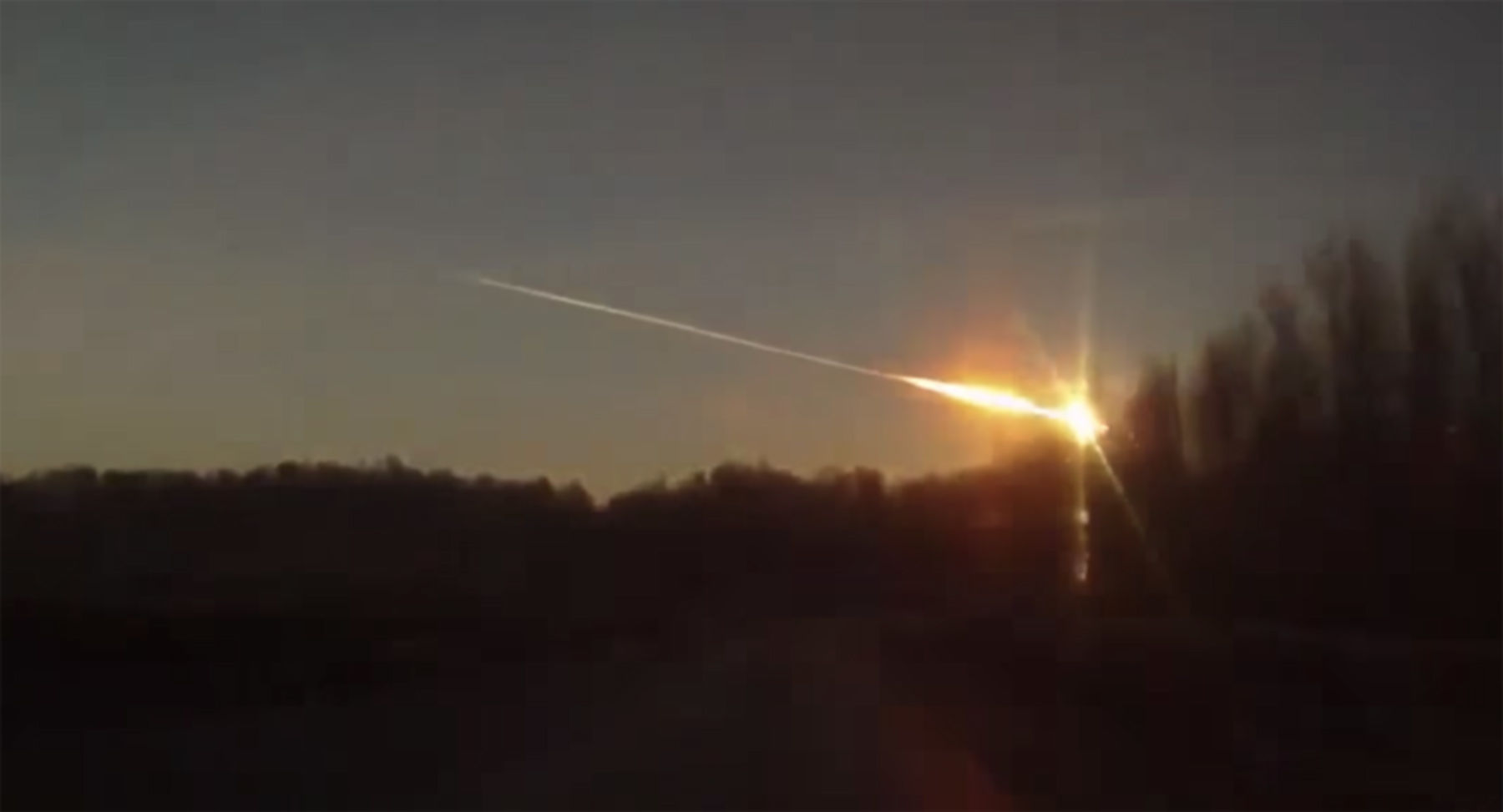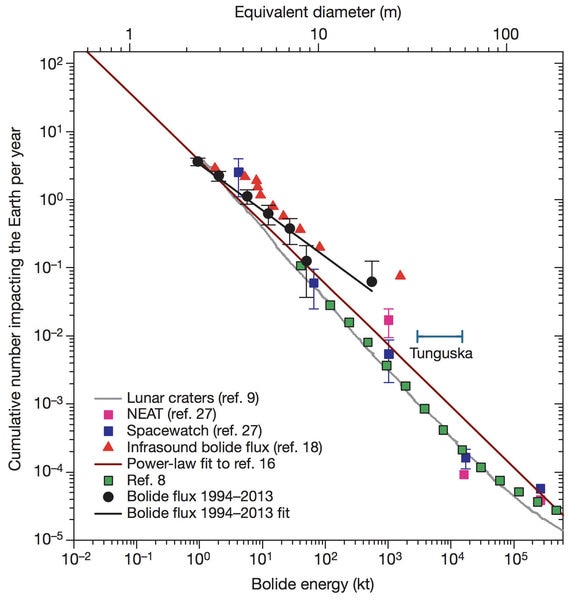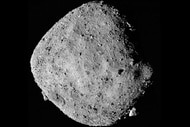Create a free profile to get unlimited access to exclusive videos, sweepstakes, and more!
A bright meteor over Greenland didn't spark nuclear war. [Phew]

Last week — on July 25, 2018, just before 10PM UTC — a space rock the size of Mini Cooper and moving at two dozen times the speed of a rifle bullet burned up over Greenland.
It also occurred, as noted by Hans Kristensen (director of the Nuclear Information Project of the Federation of American Scientists), not too far from the Thule Air Force Base, which has a missile early warning radar facility. Happily, the good folks stationed there didn’t confuse the bit of cosmic flotsam for an incoming nuke. I suspect that they knew this pretty quickly, so I doubt we were in any danger of WW III being started. But it does make me think about these things.
The particulars of the event can be found on the JPL Fireball and Bolide Data page. This interesting page lists big meteor events that have been recorded by “U.S. Government sensors” (read: military satellites and other detectors). It gives the date, time, location, altitude at peak brightness, direction, energy released as light (how bright it was), and total energy of the event.
In this case, the piece of debris (called a meteoroid) entered the atmosphere over northeast Greenland. It was moving at 24.5 kilometers per and it burned up while it was still 40 or more kilometers above the ground. Most small meteoroids (what you’d think of as “shooting stars”) burn up much higher than that, but they’re small, like the size of a grain of sand. This one was much bigger, so it got deeper into the atmosphere. How do I know? The energy.
The energy released in the event was equivalent to the explosion of 2,100 tons of TNT (if you prefer scientific units, that’s about 8.8 trillion Joules). The energy released is the same as the kinetic energy of the object, the energy of motion. It takes just as much energy to get something moving really rapidly as it does to stop it, and it’s that energy that’s turned into light and heat and boominess when the rock burns up in the air.
The kinetic energy of an object depends on how fast it’s moving (it scales with the square of velocity) and how massive it is. We know the energy released (that can be found by how bright the event was, for example), and we know the speed. That means we can find the mass! Doing the math (energy = ½ x mass x velocity2), I get a mass of about 28 metric tons for the meteoroid.
Assuming it was rock, with a density of 3 grams per cc, and further assuming it’s a sphere, that gives us a size of 2.6 meters across (I’ll leave the math to the curious reader, but remember the formula for the volume of a sphere and that density = mass / volume). If we assume a slightly lower density of 2 g/cc (plausible for certain types of asteroids) the size is 3 meters across. If it were metal at 8 g/cc it would have been just under 2 meters across. So you can see the type of material only affects the size a little bit.
So this was basically the size of small car, far larger than a grain of sand! That’s why the energy is so much higher, and how it managed to get so deep into our atmosphere.
2,100 tons (or 2.1 kilotons) of TNT sounds like a lot! But is it? It’s hard to make analogies here because even the analogies are a bit hard to grasp. For example, the total energy of the event was equivalent to the brightness of about several billion 100 Watt light bulbs over the same period of time (a few seconds). Yikes!
As it happens, some years ago I detonated 3,400 kilos of ANFO (ammonium nitrate/ fuel oil mix) that is the equivalent of about 1.5 tons of TNT. Here’s what that looked like:
[The speech to the test dummy was ad-libbed, I’ll note.]
So yeah, the Greenland event was over 1,000 times as powerful. Good thing it happened over 40 km up!
Still, when it comes to impacts, this event wasn’t a big deal. Look at the 2013 Chelyabinsk asteroid impact, which was from a rock about 19 meters across (so, much larger). That exploded with the equivalent of about 500,000 tons of TNT. That’s a half a megaton, so the yield of a small nuclear bomb. This Greenland impact was far smaller than that.
That’s a good thing.
How common is an event like this? After Chelyabinsk, a very interesting paper came out about the frequency of small impacts, and in it was a graph showing the relationship between size/energy of an impact versus how often they happen:
The horizontal axis is energy, and the vertical how often they occur (the axes are in logarithmic scale). Looking at 2.1 kilotons for this event, and reading off the plot, it looks like something like this happens between one and a few times per year. Say, every few months. So it’s not exactly raining down PortaPotty-sized asteroids all the time, but it’s not all that unusual, either.
That’s why I’m not too disturbed by this Greenland event. For one thing, asteroids (or comet chunks) this size burn up in our atmosphere pretty high off the ground, so they’re not a cause for concern. Also, the fact that it’s happened a couple of hundred times since I was born, with no real ramifications of damage, shows they’re not terribly harmful, either. You need much larger rocks to create damage here on the ground, and they’re much more rare.
The fact that it happened so close to a missile defense facility might be a bit more nerve-wracking for some folks… but even then, I’m not too concerned. For one thing, a nuke has a very different signature than a meteor. A nuke explodes very suddenly, whereas a meteor takes several seconds. This was moving far faster than a missile, too. Also, when a nuke explodes it gives off a flash of gamma rays that can be detected by satellite , whereas a meteor doesn’t. Finally, the sounds of the events are different, and in fact we have what are essentially microphones deployed to listen for very low frequency sound (infrasound) from such things.
All in all, it makes me think the military has protocols in place to distinguish between nature trying to bomb us versus us trying to bomb us. I of course can’t say there’s no danger — there have been concerns about this made before. In these cases, communication between governments is our best friend, with information about atmospheric impacts being disseminated quickly if need be. However, it’s hard to get solid facts about all this (it’s the military gathering intelligence on the enemy, after all, so it’s no shock public details are few) but, well, we’re still here.
I’m not thrilled to lay my hope for avoiding triggering a war on the phrase “so far so good”, but paradoxically events like the Greenland explosion actually make me feel somewhat better. If there had been a problem, we’d know it by now, and with these events happening several times a year there’s been ample opportunity.
I’m far more concerned about Chelyabinsk-sized impactors. But we’re taking that seriously, and soon we’ll have much better coverage of the sky for these. Doing something about them is another matter, but hopefully in time that will come too. I’d rather we were ready for the next 20-meter asteroid, rather than having been caught with our pants down like in 2013.














